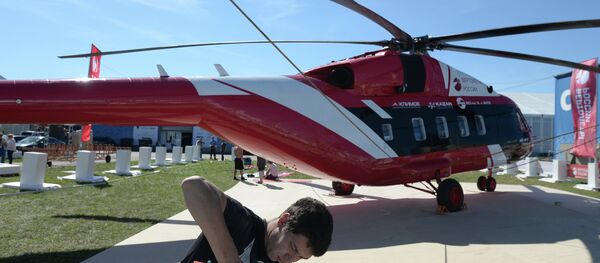Speaking about the niche the new helicopter could fill and its potential buyers, the director said that Mi-38 will be used in a wide variety of spheres; from transporting passengers and cargo flights (over 5 tons) to search and rescue missions.
He also noted that the Mi-38 was designed as a transport helicopter, not a combat one.
“It could be used to haul in cargoes and reinforcements during combat situations, engage in search-and-rescue operations and serve as a flying hospital. If need be, it could carry arms too,” Akhromeyev explained.
Russia’s top officials now use the Mi-8 helicopter equipped, among other things with a missile-defense system and advanced electronics. When asked whether such a rotorcraft could be built around the current Mi-38 design, Alexander said: “The Mi-38 is as good as the Mi-8, so adding similar gear and even armor will be no problem.”
The new helicopter can also be used in the mountains.
“Two years ago the Mi-38 set a world record reaching an altitude of 8,600 meters, which is almost as high as Mt. Everest [8,848 meters],” the director said.
Once the new helicopter has received an international certificate, Russia could start selling it abroad, above all in the countries which have traditionally relied on Russian-made aircraft.
When asked whether the Mi-38 was being built entirely from Russian-made elements, including the engine, Akhromeyev said that the TV-7-117V engines were 100-percent Russian, just like the system of pumps and onboard electronics.
“Even though some of the electronic elements used on the Mi-38 are foreign-made, we are working hard to replace them with our own, especially the ones we can no longer buy abroad due to the sanctions,” Alexander Akhromeyev said.
Serial production of the Mi-38 helicopter has already begun in Kazan and the new helicopter is currently undergoing a second stage of certification so that it meets the most stringent demands of potential buyers in Russia and elsewhere in the world.



